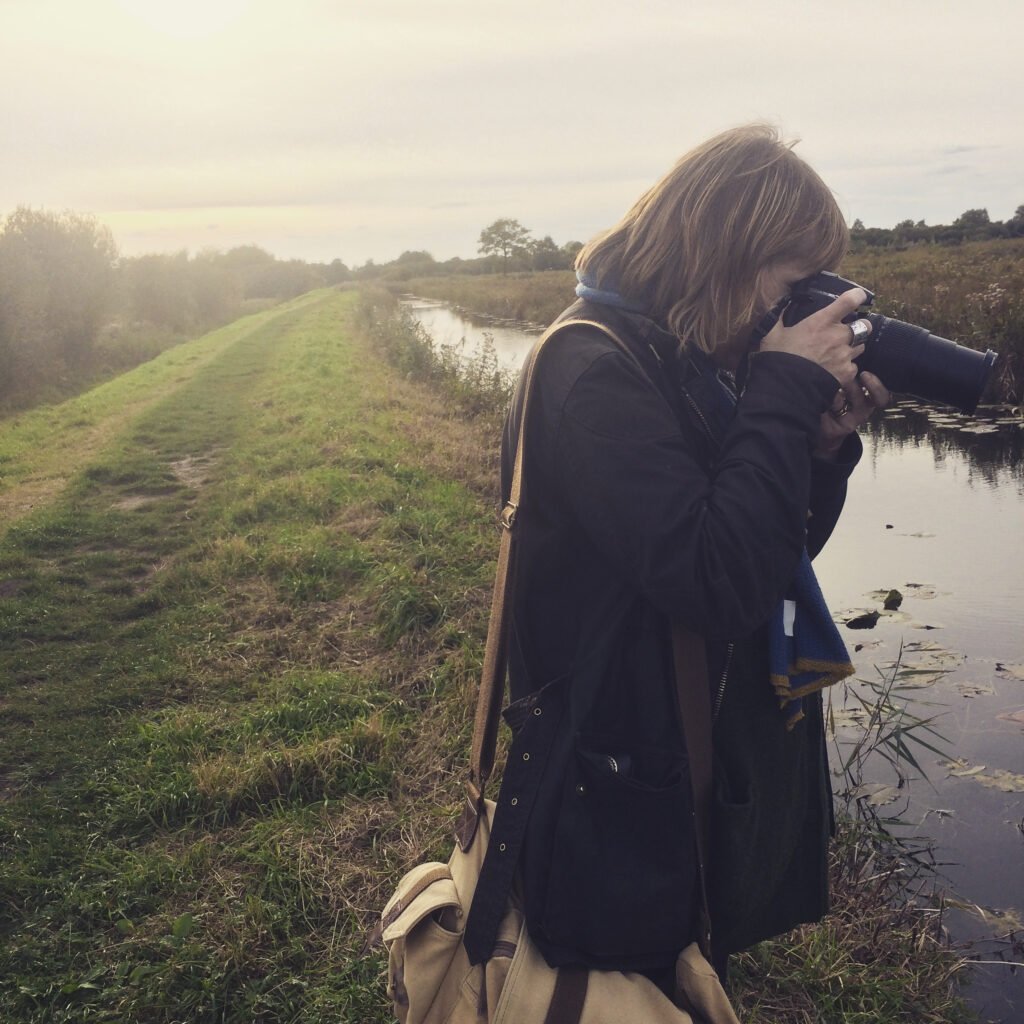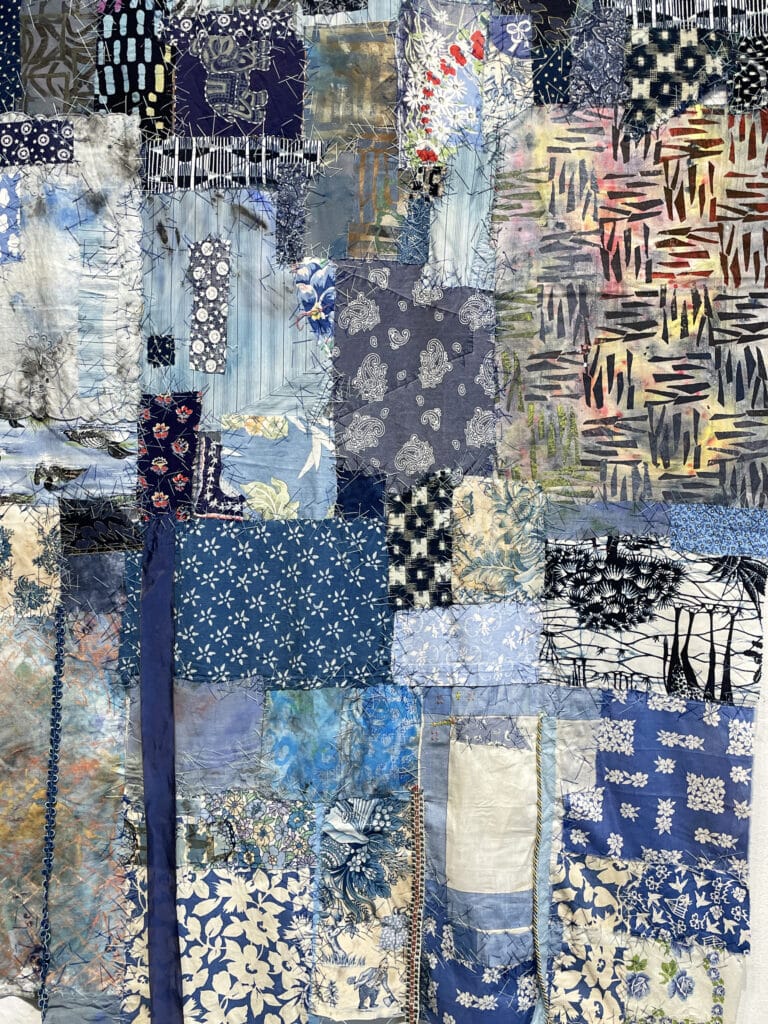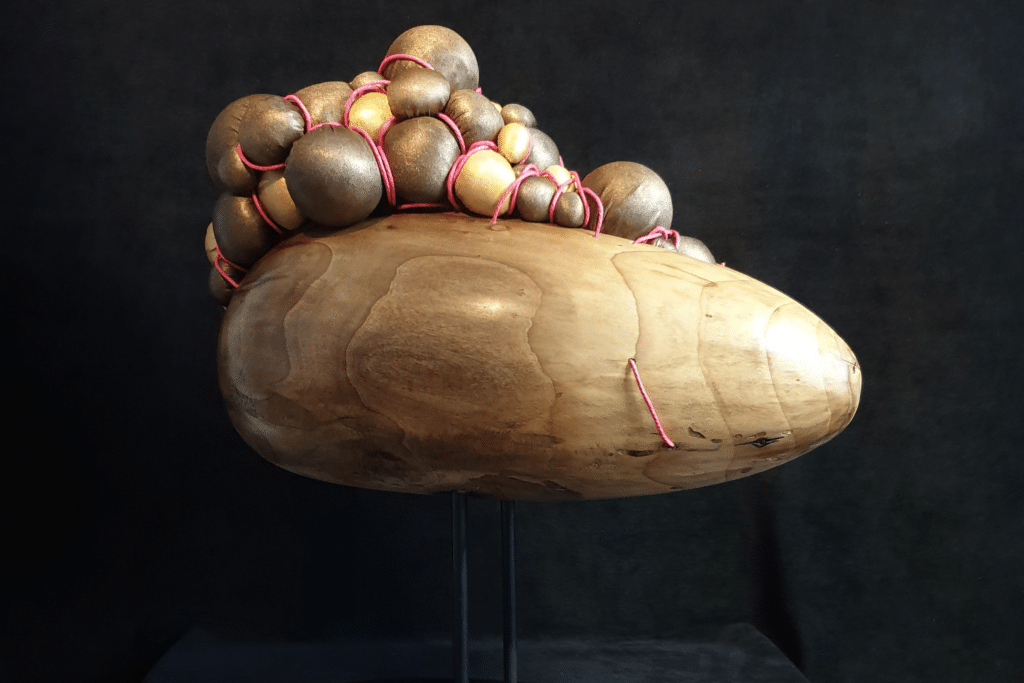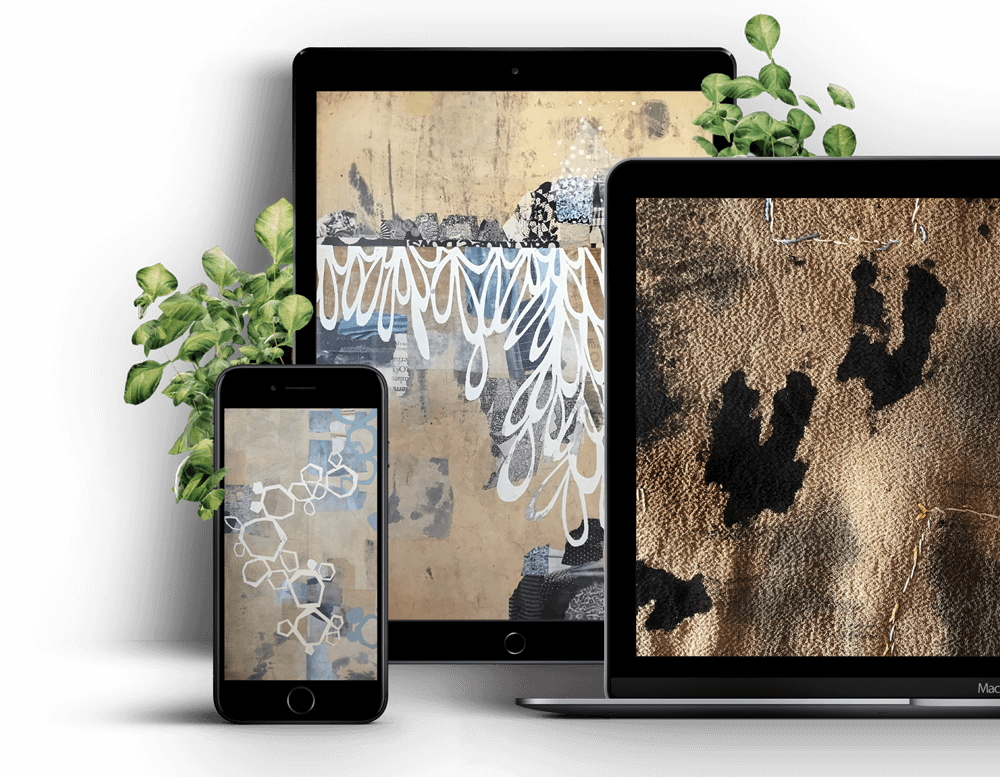Artist Q&A with Helen Terry Part Two: Four Sketchbooks
During part one of our Q&A with Helen Terry, she shared details about her collaboration with fibre artist Sally Tyrie. If you missed it, you will find the link here.
To refresh your memory, Helen marries textiles with the art of mark-making using dye and stitch. She celebrates the beauty of unpredictability, often allowing accidental effects to emerge in her work. By combining techniques like screen printing and direct dye application onto antique cloth, Helen creates layered masterpieces that whisper stories from both sides.
Growing up on Hertfordshire farms and spending significant time in East Anglia, Helen’s connection to the environment is palpable. While she holds a degree in ancient and medieval history, her artistry has been honed through self-dedicated study.
During the second part of our live Q&A session, Fibre Arts Take Two learned about Helen’s inspirations, themes and sketchbooks as she shared insights into her process that other artists can draw inspiration from.
Stitching
Stitching is a vital part of Helen’s work, “I always want the stitch to be part of the work,” she says, “not just sit on top of it, so I’m always looking for ways to integrate the stitched mark into the cloth. If the stitching is very prominent, then that has to be a deliberate decision. It’s one of the reasons I never use machine stitching. It’s always hand stitch marks because I like the subtleties of hand stitch. But it is true that there’s a relationship between stitch marks and my mark-making and drawing. I think that’s a circular thing. Jean Draper used to say that if you stitch the way you draw and draw the way you stitch, you will always be feeding one with the other.”

Landscape
Helen is consistently drawn to landscape work despite herself, “I’m always getting caught out,” she says, “because I used to tell myself, ‘I’m not a landscape artist,’ and then all these “landscapes” appeared. I could see that happening again in future!”
Themes and inspiration
Helen believes she has a strong thematic throughline to her work, “There are definitely themes that recur throughout my work,” she says, “There are things that I’m always interested in that I keep coming back to. Some of them are quite abstract and conceptual. I’m always interested in ambiguity and issues about perception. With the Wicken Fen project, for example, I was fascinated with reflections and how they are an indirect way of looking at something. Also, I’ve always been interested in historical knowledge and how we interpret information.”
Helen is also interested in psychology “because of the way the mind interprets what it sees or remembers.” In terms of subject matter, she says, “I keep going back to the interaction of land and water. I find the edges where land and water meet and what happens there really interesting, and I keep going back to those kinds of landscapes.”
In terms of inspiration, Helen is very interested in old Chinese landscape paintings, “What I particularly like about them,” she says. “is the way sometimes, even while it looks like a landscape, you can see the marks that were used to make the painting so that you’re aware of both, you’re aware of the marks and of the imagery at the same time, and I like that. I like that tension. I also keep going back to 17th-century poetry and music. I listen to that sort of music all the time in my studio, and sometimes I get ideas from poetry or music from that period.”

Sketchbooks
In preparation to create artistic works, Helen uses sketchbooks.
“I think it’s interesting because when people ask that question,” she says, “I always get a mental image in my mind of the kind of painter’s sketchbook with very traditional drawings and pictures. But that is totally not what my sketchbooks look like, not a single one. I usually have about four different types of sketchbooks on the go. I have a studio book, and that’s basically all my technical notes. It is a complete mess, and I never show it to anyone. It has all my technical notes about what I’m doing, about dyes and other processes. It’s also shopping lists, to-do lists, timetables, and all the boring studio stuff. Paradoxically, it’s also where I work out my compositions.”
The second type are Helen’s ‘project books’, “I ended up with four volumes of these for Wicken Fen,” she says, “The project book, that’s where I explore the visual imagery that I’m working with for a particular project. So it might mean that’s where a selection of the photographs might go. Then I will work with collages, using photographic imagery combined with other materials. It might also be where I’ll put drawings or other visual things. This is where I experiment with what kind of imagery I’m going to use and how it’s going to work.”
Her dye book “is a record of all my dye and colour mixing experiments,” says Helen, “and it cross-references to my studio book, which has the actual technical information in it. As long as I date entries in my dye book, I can always find the notes that go with it.”
Finally, Helen has her mark-making books, “Just as a musician has to practice scales or chords in order to be a good musician,” she says, “if my work is about mark making, I need to consistently practice making marks and develop and explore them. So that’s what they’re about. Although I have done this as a daily practice in the past, I find it’s more helpful to do it in blocks and keep coming back to it. I find otherwise you get into a bit of a rut, and you repeat yourself, so it’s good to do it occasionally, have a break, then come back to it.”

About Helen Terry
As we wrap up this two part blog, Fibre Arts Take Two would like to extend a heartfelt thank you to Helen Terry for her invaluable contribution as a special guest artist during the 2023 enrolment of the “Visual Narratives, Print, Paint, and Stitch” online course.
Helen’s willingness to step in and share her artistic practice was a beacon of support when Sally Tyrie was unable to interact with students due to illness. This gesture not only enriched the learning experience but also demonstrated the strength of collaboration in the arts.We hope you’ve enjoyed getting to know artist Helen Terry as much as we have. Her insights and approach to art have surely added depth to our understanding and appreciation of the creative process.
For those who are eager to delve deeper, we invite you to enjoy the full interview with Helen and learn from the expertise of fine artist Sally Tyrie. Don’t miss the opportunity to be part of this enriching journey. Head here to place your name on the waiting list for the next enrolment period. Your artistic exploration awaits!

Notifications
No video selected
Select a video type in the sidebar.
Join Our Newsletter
OUR YOUTUBE CHANNEL
View our interviews and more on our Youtube channel!
OUR FACEBOOK GROUP
Join our Community and stay updated with our upcoming announcements!




